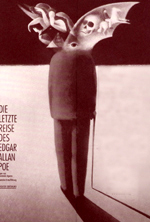Minnesota Romantic | Operas | Song Cycles | Choral Works | Orchestral | The Teacher/Composer | Timeline
Part 5: Orchestral Music Argento's symphonic works have been performed by many of America's leading orchestras, including the New York Philharmonic, the Baltimore Symphony, the Buffalo Philharmonic, the Minnesota Orchestra, and the Saint Paul Chamber Orchestra. His orchestral music, like the vocal works, is shaped by poetic imagery. A case in point is his enthralling but surprisingly forgotten Mask of Night (1965). The set of brilliant orchestral variations, based on passages from Shakespeare dealing with the night, culminates in a Mahlerian vocal movement, a soprano setting of Juliet's soliloquy from Act II of Romeo and Juliet. In this score of more than 30 years past, his mastery of the orchestra is already evident. The refinement of his orchestral skills, and the imaginative use to which he put his literary bias, is demonstrated by In Praise of Music, written for the Minnesota Orchestra's diamond jubilee in 1977. But this is no mere celebratory opus. Bearing a typical Argento subtitle, "Seven Songs for 0rchestra," the score displays the inherent lyricism, restraint, and, above all, the inventiveness of this Minnesota Romantic.
The instrumental "singing" flows from passages of text prefacing each section. The first six songs are dedicated to mythological or religious figures, from David, Apollo, Pan, and Orpheus, to the angel Israfel and Saint Cecilia. In a stirring orchestral opus that probes the inherent vocality of instruments, all the currents of Argento's art coincide: the imaginative use of texts; allusion; the purest lyricism, drawn in the colorful palette of the modern orchestra; and, above all, homage to the masters from whom he descends. The final song is reserved as a eulogy "for the child, MOZART," scored for violins only. The ending is quintessential Argento: a unison high D, played by four violins, which fades from quadruple piano (pppp) to niente, the Italian for "nothing." Argento invariably uses the language of his immigrant progenitors and the great composers whose models are the source of his art.
|
|||||||||||||||||||
MPR Home | News | Music Collection | Events | Radio Listening | Your Voice | About Us | Support Us | Help ©2005 Minnesota Public Radio | Terms of Use | Privacy Policy |


